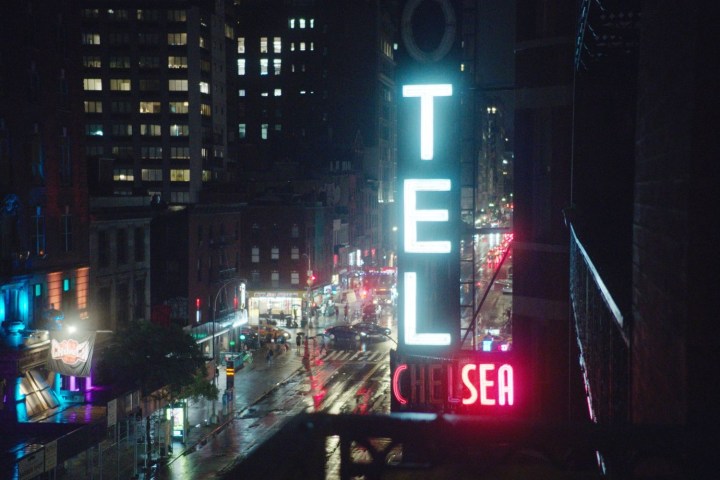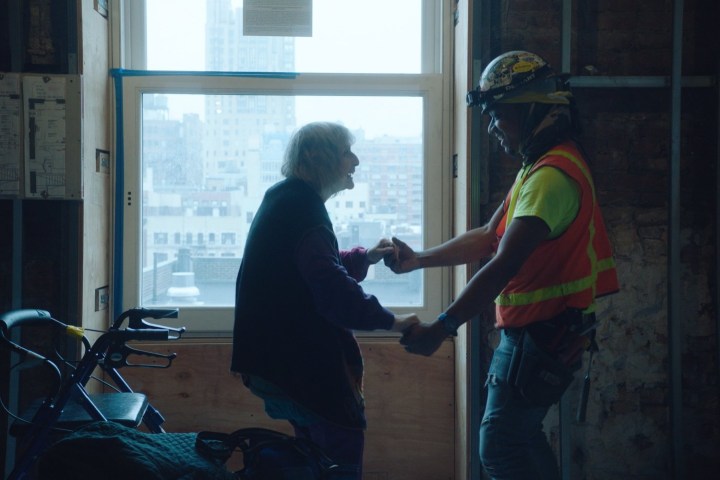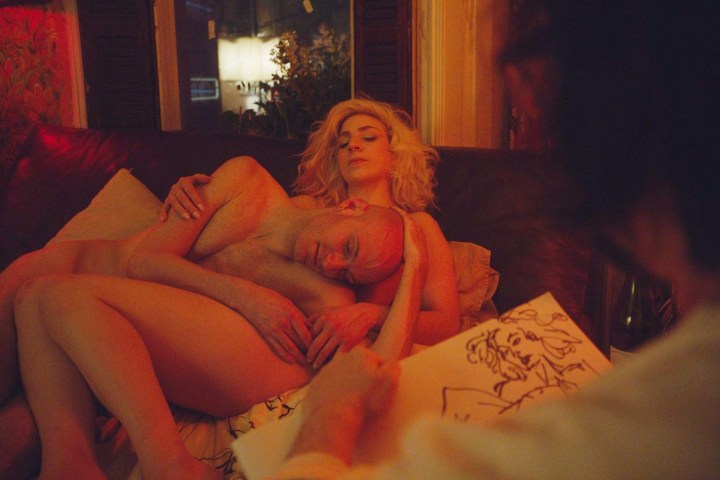Once upon a time, the Chelsea Hotel was the epicenter for some of the most famous artists and entertainers in the world. Bob Dylan, Patti Smith, Andy Warhol, Stanley Kubrick, and Jane Fonda all lived at the famous residence in New York City. After years of litigation and renovations, only a handful of full-time residents remain in a building that’s now become a tourist attraction. Their lost stories are now at the forefront of the new documentary, Dreaming Walls: Inside the Chelsea Hotel.

Directed by Amélie van Elmbt and Maya Duverdier, the film traces the history and significance of the Chelsea Hotel, and how it once became a refuge for the bohemian lifestyle in the 1950s and 1960s. Dreaming Walls explores the complicated renovation process through the eyes of its lesser-known residents who remain in the hotel to this day. In an interview with Digital Trends, van Elmbt and Duverdier discuss their motivation behind the documentary, how they chose which residents to feature, and how they hope viewers will look at the landmark in a whole new light.
Note: This interview has been edited for length and clarity.

Digital Trends: What compelled you to make a documentary about the Chelsea Hotel?
Amélie van Elmbt: We never had a plan to make a movie about the Chelsea Hotel. It was just by chance. We were on 21st street at a screening of my previous film in Tribeca, and we knew about the place through a book of Patti Smith’s, Just Kids. We entered the place, and we were almost kicked out because it was closed to the public. We quickly established a relationship with Merle [Lister, who appears in the doc]. She came to see my movie and offered us to come to her place. We started to get to know about the situation of the hotel, about the slow process of the renovation, and the hotel being transformed into a luxury establishment.
Because of the trust we built with Merle and the situation of the hotel, we decided that maybe we should try to make a movie. But it was just an idea, just a seed that we put there, not really knowing that we started this whole process that is the film now. So I think it’s also because of this approach that we gained the trust of the people, and then, we could start the film. We never approached the hotel or its residents with the idea of documenting them. It was really an encounter with the place, with the history of the place, and with the people that gave us the will to make this film.

You mentioned Merle. You interview an interesting array of Chelsea Hotel tenants. How did you select those subjects to feature in this documentary?
Maya Duverdier: It all started with that first encounter with Merle. I guess it was a kind of love at first sight, let’s say. We really got on well with each other, and she talked about her dancing. And so we were more and more curious about her work to discover her life or so. Then when she invited us to her home, we were more and more confident, and she introduced us to other people. And then I guess the more people we met, the more everyone who was in the hotel heard about our presence. They were curious about us, and we were curious about them. So it happened very organically. We were never knocking on doors. It was really not our way of working. We really wanted to make it as natural as possible.
But also I remember, for example, Skye [Ferrante, the metal sculptor featured in the film], we just met him in the elevator. That’s really a typical encounter. So it could also happen like that. And for a lot of people that we filmed, it was also like that. They try to talk to us … it happened like that. It was a kind of a natural selection I’d say.
Van Elmbt: But also I think that at some point, we realized that there was not one story of the Chelsea Hotel. All of the people we met, they make up a façade of the place. They had a view, a point of view, that gives us a kind of a polyphonic perspective of what the Chelsea Hotel is to all those people. So when we had to make a choice of who we will keep in the film, it was really to have this different point of view on art, on the history of the hotel, on the way to live on a daily basis. So it was really like a choice. We didn’t like to take sides. We use them as a way to give a perspective of their own “Chelsea life.”
Other artists such as Andy Warhol, Bob Dylan, and Patti Smith have featured the Chelsea Hotel in their films, songs, and books. How does your use of the hotel compare with and differ from theirs?
Van Elmbt: When Patti Smith came to the hotel, she said, “I wanted to be where the big guys were.” So, of course, you cannot speak about the hotel without mentioning its most famous occupants. But it’s not the same relationship because time has passed. The Chelsea is not the same place anymore. That’s also why we decided, as Europeans, that it’s tricky to make a film about something in New York, but the hotel is so international. We decided that our point of view will be, obviously, to keep traces of the ones that were never in the spotlight. [People] like Bob Dylan used the hotel, but that’s why they were also recognized. It’s like they give and they receive from the hotel.

Those people that we filmed didn’t find their way to be so successful. So we were like, “Okay, the hotel is changing. We need to keep traces of their existence, of their life in the hotel, before it changes, because now, of course, the hotel will be different.” You won’t have a Patti Smith with no money entering the hotel anymore. It’s not going to happen. That era is gone, and they are the last ones that really lived that time and created there. So that was really the best we had. We don’t want to give the same impression or make it kind of a romantic point of view of the hotel. Of course, it’s nostalgic because the place is nostalgic today, but the main point was to keep traces of them, like to keep their existence alive, and their presence in this place.
What do you want viewers to take away after they’ve seen this documentary?
Van Elmbt: I think we want the film to be a starting point of more research about the place because there are so many [fascinating] things about it. We hope that they will come to see the real people living there. And we hope that they will see another side to the Chelsea, the unknown stories somehow of those people that created this amazing place. They will want to look more at the history of the place or the utopian ideal that was behind it and discover it for themselves.
Duverdier: We also wish that this film [will] make people realize that we really need these kinds of places that are disappearing in some cities. They should realize that it’s super important to have places where we can still have artists creating for free and for freedom and not for the money. Yeah, that’s very important.
Van Elmbt: Also, to not have just one point of view that corresponds to a class of wealthy people. It creates creativity and imagination because people have to deal with each other. In the world, we are all in our bubble, and it’s very rare that we encounter someone like Merle in New York or the people in the Chelsea that don’t belong to this place anymore. They don’t exist there anymore. Like she said, it’s very important to be aware of that.
Dreaming Walls: Inside the Chelsea Hotel is in theaters and available on VOD.
Editors' Recommendations
- In a Violent Nature’s Chris Nash on creating the most disturbing horror movie ever made
- 15 years ago, Pixar’s Wall-E painted a terrifying picture of our AI future
- Niki Caro and Joseph Fiennes discuss Netflix’s action thriller The Mother
- Director Jeremy Garelick on Adam Sandler, Jennifer Aniston, and making Murder Mystery 2
- How did they pull off those amazing action scenes in John Wick: Chapter 4?



